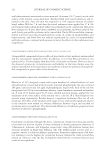Table III Skin Biophysical Parameters for Commercial and Compounded Moisturizers Containing Urea 10% and Control Sites, after 1, 4, and 2 h as well as 1-Week Application Urea 10% Test site Before 1 h 4 h 24 h 1 week Sebum (μg/cm)2 Commercial 0.2 ± 0.14 6.86 ± 3.93 2.92 ± 0.62 2.66 ± 0.87 2.66 ± 1.22 Compounded 0.2 ± 0.141 7.00 ± 1.09 4.86 ± 0.83 4.45 ± 0.88 3.53 ± 0.87 Cream base 0.45 ± 0.11 6.93 ± 3.14 3.46 ± 0.87 3.45 ± 0.71 2.13 ± 1.08 Untreated 0.44 ± 0.15 1.16 ± 0.13 1.16 ± 0.55 1.48 ± 0.55 1.4 ± 0.64 p (compounded vs. commercial) 1 0.899 0.049 0.184 0.564 Friction Commercial 281.22 ± 144.52 594.17 ± 267.97 560.48 ± 293.6 535.12 ± 257.4836 359.38 ± 265.21 Compounded 238.78 ± 192.80 523.70 ± 278.36 503.74 ± 236.48 513.68 ± 236.48 457.34 ± 217.5 Cream base 295.88 ± 173.01 208.63 ± 115.93 293.40 ± 86.68 310.33 ± 187.45 211.42 ± 35.90 Untreated 209.96 ± 186.21 177.63 ± 90.71 191.99 ± 116.636 245.02 ± 185.54 258.07 ± 135.66 p (compounded vs. commercial) 0.374 0.331 0.273 0.820 0.437 pH Commercial 5.75 ± 0.29 5.98 ± 0.30 5.80 ± 0.24 5.70 ± 0.31 6.04 ± 0.32 Compounded 5.81 ± 0.39 5.98 ± 0.30 5.85 ± 0.30 5.68 ± 0.29 6.18 ± 0.40 Cream base 5.39 ± 0.56 5.65 ± 0.42 5.11 ± 0.40 5.26 ± 0.59 5.55 ± 0.50 Untreated 5.70 ± 0.42 5.61 ± 0.34 5.57 ± 0.27 5.63 ± 0.41 5.74 ± 0.33 p (compounded vs. commercial) 0.263 0.893 0.328 0.593 0.06 EFFECT OF A UREA-BASED COMPOUNDED MOISTURIZER 209
JOURNAL OF COSMETIC SCIENCE 210 No adverse reactions were rep orted or observed in any of the treatment groups. In both cohorts, participants’ satisfaction with treatment was higher for the commercial products (3.85 ± 0.80 vs. 3.66 ± 0.91), and this difference was statistically signifi cant (p = 0.042). However, the price of commercial products was slightly higher (Table I). DISCUSSION This was a pilot study t o investiga te the effect of a urea-based compounded moisturizer on barrier function, compared with similar commercial product. The results showed that both moisturizers had appropriate and comparable effects on skin barrier function. How- ever, commercial products led to better improvement in TEWL and skin hydration 4 h after single application. In both groups, compounded and co mmercial products were water-in-oil emulsions (appropriate pharmaceutical formulation for xerosis) and contained urea and hydro- philic petrolatum as the main active ingredients. Urea is a natural endogenous hume ctant which replaces water in low humidity conditions and maintains a fl uidic SC (11,12). Topical formulations with urea concentrations of 5–10%, previously, showed to improve hydration and water retention. In addition, urea can increase the amount of free water in conditions of high humidity (13). In concordance with our fi ndings, improvement in skin hydration using topical urea has been reported within the fi rst hour of application, reaching to the maximum level of 4–6 h following one dose application (14,15). In addition to moisturizing prope rties, 10% urea has recently been shown to improve skin barrier function in healthy volunteers associated with the elevated expression of genes involved in SC homeostasis, including the Filaggrin gene-encoding fi laggrin protein (16). Concentrations less than 10% have been also shown to strengthen the skin barrier in a series of other studies (17). Hydrophilic petrolatum is compose d of cetyl stearyl alcohol, white Vaseline, and wool wax alcohols (18). High molecular weight hydrocarbons, lanolin alcohols, and acids form an inert layer on the skin, leading to a reduction in TEWL. Thus, occlusion is the most predictable mechanism by which water loss is reduced from the skin. The results of the current study confi rmed the Nasrollahi et al. (19) report, where treatment with a commercial urea 5% hydrophilic petrolatum product resulted in a signifi cant improvement in SC hydration and TEWL in patients with atopic dermatitis. Despite similar main ingredients, there were some differences in the composition of excipients of two creams, which can be the reason for the slight variation of their effects on skin barrier function. Commercial formulation contained phenoxyethanol, which is a permeation enhancer and promotes permeation of active ingredients by enhancing diffu- sion or solubility to pass through the SC (20). Usually, this preservative is not used in pharmacies for compounding preparations. In fact, at pharmacies, most compounding products are prepared as preservative free for short time usage. Polyacrylamide C13–14 isoparaffi n Laureth-7 is another excipient used in test commercial products, which is a rheology modifi er, stabilizer, thickener, and emulsifi er. It could form a polymerized adhesive fi lm on the skin surface which is responsible for the occlusive effect and helps reduce the TEWL (as shown in the current study). A report by Couteau
Purchased for the exclusive use of nofirst nolast (unknown) From: SCC Media Library & Resource Center (library.scconline.org)

























































































































